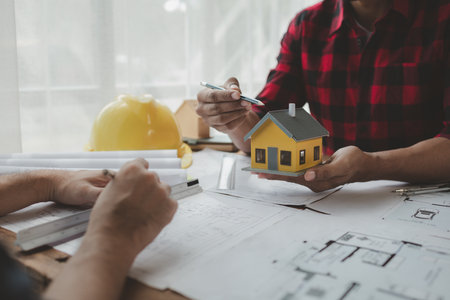1. Understanding Local Demographics
When evaluating a propertys location, understanding the local demographics is one of the most important steps. It helps you determine whether the neighborhood fits your goals—whether youre buying a home to live in or investing in real estate for long-term growth.
Why Demographics Matter
Demographics tell you who lives in the area. This includes population trends, income levels, age distribution, and education levels. These factors can help you predict how the neighborhood may change over time and whether it supports your needs and expectations.
Key Demographic Factors to Consider
| Factor | What to Look For | Why It Matters |
|---|---|---|
| Population Trends | Is the population growing, stable, or declining? | A growing population can signal increasing demand for housing. |
| Income Levels | What is the median household income? | This affects property values and local business development. |
| Age Distribution | Younger families vs. retirees? | Your lifestyle or investment strategy might depend on who lives nearby. |
| Education Levels | % of residents with high school, college, or advanced degrees? | This often correlates with employment trends and economic stability. |
How to Find This Information
You can find demographic data from sources like:
- U.S. Census Bureau
- Data USA
- City-Data.com
- Your local city or county government websites
If you’re an investor, look for areas where income and population are steadily rising. If you’re buying a home to live in, make sure the age range and community style match your lifestyle—for example, family-friendly neighborhoods vs. urban singles environments.
The better you understand who lives in the neighborhood today—and who might be living there tomorrow—the smarter your decision will be when choosing a property location.
Zoning Laws and Land Use Regulations
When considering a property, understanding zoning laws and land use regulations is essential. These rules determine how a piece of land can be used—whether for residential, commercial, industrial, or mixed-use purposes—and directly impact the propertys value and potential.
Why Zoning Matters
Zoning codes are local laws set by city or county governments that regulate land use. They affect what kind of buildings can be constructed, how tall they can be, how much space they must leave around them (called setbacks), and whether certain businesses or activities are allowed in the area. If youre buying a home to live in, rent out, or develop further, zoning laws will define what you can legally do with that property.
Types of Zoning Categories
Each zone has specific permitted uses. Heres a quick breakdown:
| Zoning Type | Typical Uses |
|---|---|
| Residential (R) | Single-family homes, duplexes, apartments |
| Commercial (C) | Retail stores, restaurants, office buildings |
| Industrial (I) | Warehouses, factories, manufacturing facilities |
| Agricultural (A) | Farms, ranches, limited residential use |
| Mixed-Use (MU) | Combination of residential and commercial spaces |
Building Restrictions and Permitted Uses
A propertys zoning designation can limit your ability to build additional structures or expand existing ones. For example:
- You might not be allowed to add a rental unit in a single-family zone.
- Certain zones may have height limits that prevent multi-story additions.
- If the lot is too small or oddly shaped, it may not meet minimum size requirements for new construction.
Common Building Restrictions Include:
| Restriction Type | Description |
|---|---|
| Setbacks | The required distance between the structure and the property line |
| Height Limits | The maximum number of stories or feet a building can reach |
| Lot Coverage | The percentage of the land that can be covered by buildings |
| Parking Requirements | Minimum number of off-street parking spots required per unit or business type |
How Zoning Affects Investment Potential
If you’re planning to rent out the property or redevelop it later on, zoning regulations will either open up opportunities—or shut them down. For example:
- Short-term rentals: Some areas prohibit Airbnb-style rentals in residential zones.
- Additions: Want to add an accessory dwelling unit (ADU)? Your zoning code will say if thats allowed.
- Future development: Rezoning may be possible but often requires public hearings and approval from local authorities.
Zoning Research Tips for Buyers and Investors
- Check with the local planning department: They can provide current zoning maps and code details.
- Review any overlays: Special districts like historic zones or environmental overlays may impose extra rules.
- Look at neighboring parcels: Nearby changes in zoning could impact your property’s future value—for better or worse.
- Ask about pending updates: Cities often revise their zoning codes as neighborhoods grow and change.
Zoning laws and land use regulations play a huge role in shaping your propertys potential. Whether youre a homeowner looking to build an addition or an investor evaluating rental opportunities, knowing these rules upfront helps you avoid surprises and make smarter decisions.
![]()
3. Assessing Infrastructure and Amenities
When evaluating a propertys location risk, its essential to look beyond demographics and zoning. The availability and quality of infrastructure and local amenities play a major role in determining how desirable a property is—not just today, but also in the future. These factors can affect everything from your day-to-day convenience to the long-term value of your investment.
Key Amenities That Influence Property Value
Here are some of the most important types of infrastructure and amenities to consider:
| Amenity Type | Why It Matters |
|---|---|
| Public Transportation | Easy access to buses, subways, or trains can increase property demand and reduce commute times. |
| Schools | Proximity to well-rated public or private schools is a top priority for families and boosts resale value. |
| Healthcare Facilities | Nearby hospitals, clinics, and pharmacies provide peace of mind and are especially important for older buyers or families with children. |
| Parks & Recreation | Green spaces, walking trails, and recreational centers improve quality of life and attract health-conscious buyers. |
| Major Roads & Highways | Good road access allows for easy travel but be cautious—being too close can lead to noise issues. |
How to Evaluate These Features
- Visit the neighborhood: Walk or drive around at different times of day to get a feel for accessibility and traffic flow.
- Use online tools: Google Maps, school rating sites like GreatSchools.org, and public transit apps can give you valuable insights.
- Talk to locals: Residents can provide firsthand knowledge about commute times, school performance, and changes in the area.
A Balanced Approach
A location with great schools but no nearby grocery stores may not meet all needs. Similarly, being near a major highway might be convenient but could bring extra noise. Look for neighborhoods that offer a good balance of all key amenities to ensure both comfort and value retention over time.
4. Evaluating Crime Rates and Safety
When youre thinking about investing in a property, one of the most important things to consider is how safe the area is. Crime rates can have a big impact on property value, rental demand, and your peace of mind. Even if a neighborhood looks nice during the day, its essential to dig into real data to understand what’s really going on.
Why Crime Data Matters
High crime rates can scare off potential buyers or renters, lower property values, and even increase insurance premiums. On the other hand, areas with low crime tend to attract families, professionals, and long-term tenants—making your investment more stable and potentially more profitable.
Where to Find Reliable Crime Data
You can find up-to-date crime statistics from several trusted sources:
- Local Police Departments: Many city police websites offer crime maps and reports.
- FBI Uniform Crime Reporting (UCR): A national database that tracks various types of crimes.
- NeighborhoodScout: Offers detailed crime ratings by zip code or neighborhood.
- City-Data.com: Provides crime stats alongside demographic information.
Key Safety Indicators to Review
Not all crimes are equal when evaluating safety for investment. Focus on these key indicators:
| Crime Type | Why It Matters |
|---|---|
| Violent Crimes (assault, robbery) | Affects personal safety and public perception of the area |
| Property Crimes (theft, burglary) | Can lead to higher insurance costs and tenant turnover |
| Vandalism | Might indicate poor community oversight or declining conditions |
Tip:
Compare crime trends over time. An improving trend could mean future growth potential, while rising crime might signal upcoming challenges.
Talk to the Locals
If possible, spend some time in the neighborhood or talk to people who live there. Ask questions like “Do you feel safe walking at night?” or “Have you noticed any recent changes in safety?” First-hand insights can give you valuable context beyond just numbers.
How Safety Impacts Investment Strategy
A safer area often means better tenant retention, lower vacancy rates, and higher resale value. While properties in high-crime zones may be cheaper upfront, they can come with hidden costs like frequent repairs, security upgrades, or legal issues with tenants.
5. Identifying Future Development Projects
When evaluating the potential risks and rewards of a property location, one key factor to consider is future development in the area. Changes in infrastructure, commercial activity, or public services can significantly affect your propertys value—either positively or negatively.
Why Future Developments Matter
Future developments can reshape neighborhoods. A new shopping center may attract more residents, increasing home values. On the flip side, a planned highway might increase noise levels or traffic near your home, potentially lowering its appeal. Being aware of what’s coming allows you to make informed decisions before buying or investing.
Where to Find Development Information
Most cities and counties have planning departments that release information about upcoming projects. Here are some useful sources:
- City Planning Department Websites: These often list zoning changes, land use plans, and upcoming development proposals.
- Public Hearings & Community Meetings: Attending these events helps you stay ahead of major changes in your neighborhood.
- Local News Outlets: Local newspapers and online news often report on big commercial developments or infrastructure upgrades.
- Real Estate Agents: A knowledgeable local agent may have insider info about whats being planned nearby.
Types of Projects That Impact Property Value
| Type of Project | Potential Positive Impact | Potential Negative Impact |
|---|---|---|
| New Commercial Centers (e.g., malls, grocery stores) | Convenience, job creation, increased property demand | Increased traffic, noise, potential for overcrowding |
| Public Transit Expansions (e.g., subway or bus lines) | Easier commuting, higher property values near stations | Construction disruption, parking challenges |
| Parks and Recreational Facilities | Better quality of life, attractive for families | No major downside unless it increases local taxes |
| Zoning Changes for High-Density Housing | More housing options, rising neighborhood profile | Crowding, changing neighborhood character |
| Highways or Major Roads Construction | Easier access to other areas, faster commutes | Noisy environment, lower air quality |
Tips for Evaluating Upcoming Projects Near Your Property
- Map It Out: Use tools like Google Maps or city GIS systems to visualize how close future projects will be to your property.
- Ask the Right Questions: What is the timeline? Who is funding it? Is it confirmed or just proposed?
- Look at Historical Trends: If a city has invested heavily in one area before, they may continue developing there.
- Talk to Neighbors: Long-time residents may know about upcoming changes not yet officially announced.
The more you understand about future developments in your area, the better prepared youll be to assess the true value—and risk—of a property location.


